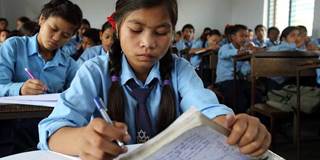A half-century of remarkable progress in providing primary education to children could be lost if we fail to provide opportunities for further schooling. Investing in secondary education in the developing world would have far-reaching benefits – and need not cost a fortune.
DHAKA – The world has made remarkable progress in providing primary education to children worldwide. In the 1960s, fewer than half of the developing world’s children were enrolled in primary school. Today, more than 90% are. In many regions, a higher proportion of girls than boys enroll in primary school. To be sure, too many children remain out of school in countries like Nigeria and Pakistan, but the real problem lies in what happens after the primary years are over.
Without opportunities for secondary education, children have little chance to improve their livelihoods, and the progress the world has made could be jeopardized. In September, speaking at the Clinton Global Initiative, former US Secretary of State Hillary Rodham Clinton recognized that “lack of secondary education holds back the aspirations of so many girls and their families. It undermines prosperity and stability around the world.”
Clinton announced a major initiative in cooperation with more than 30 organizations, including the MasterCard Foundation, Intel, and Microsoft. This group has pledged more than $600 million over five years to enable 14 million girls to “attend and complete primary and secondary school.” It is a wise investment. In addition to the obvious benefits that education can deliver, increased enrollment in secondary schools offers advantages to all levels of society.



DHAKA – The world has made remarkable progress in providing primary education to children worldwide. In the 1960s, fewer than half of the developing world’s children were enrolled in primary school. Today, more than 90% are. In many regions, a higher proportion of girls than boys enroll in primary school. To be sure, too many children remain out of school in countries like Nigeria and Pakistan, but the real problem lies in what happens after the primary years are over.
Without opportunities for secondary education, children have little chance to improve their livelihoods, and the progress the world has made could be jeopardized. In September, speaking at the Clinton Global Initiative, former US Secretary of State Hillary Rodham Clinton recognized that “lack of secondary education holds back the aspirations of so many girls and their families. It undermines prosperity and stability around the world.”
Clinton announced a major initiative in cooperation with more than 30 organizations, including the MasterCard Foundation, Intel, and Microsoft. This group has pledged more than $600 million over five years to enable 14 million girls to “attend and complete primary and secondary school.” It is a wise investment. In addition to the obvious benefits that education can deliver, increased enrollment in secondary schools offers advantages to all levels of society.